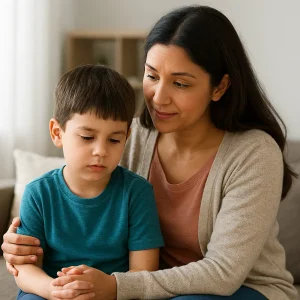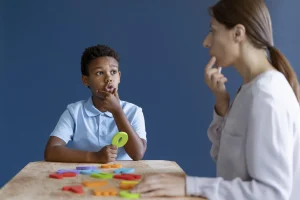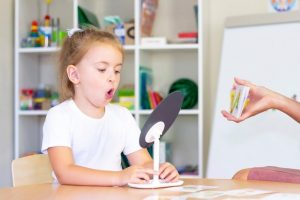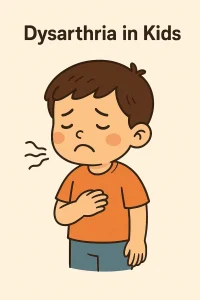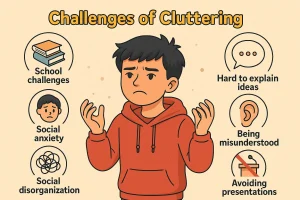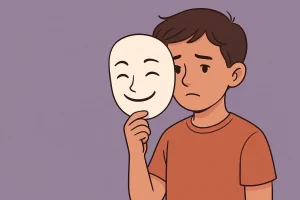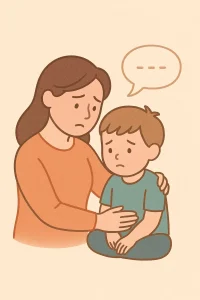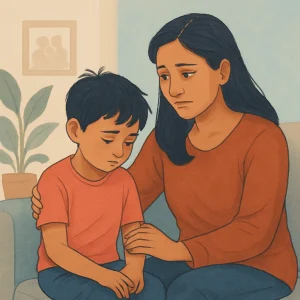10 Fun Speech Activities for 2-Year-Olds You Can Try Today
Last Updated: April 21, 2025
Toddlers are full of energy, wonder, and endless curiosity. That’s why choosing the right activities for 2-year-olds can make a huge difference in how they learn, grow, and bond with you. From the moment they wake up, they’re ready to explore, move, and ask the big question—“What’s next?”
As parents and caregivers, this is the perfect time to tap into their natural playfulness to boost their early learning and development. The good news? You don’t need fancy toys or screens. Just a few simple, fun, and purposeful activities can spark learning, improve communication, and build a stronger bond with your little one.
In this article, we’re sharing 10 fun activities for 2-year-olds that not only keep them engaged but also support brain development, motor skills, and emotional growth—all while having a blast together.
Worried about your child’s communication skills or developmental milestones? Book a free consultation with our speech therapists today
Why Are Fun Activities Important for 2-Year-Olds?
Ever wondered why your 2-year-old is always moving, touching, talking, or asking “why”? That’s because this age is one of the most critical stages for development. Every block they stack, song they sing, or puzzle they try helps shape how they learn and grow.
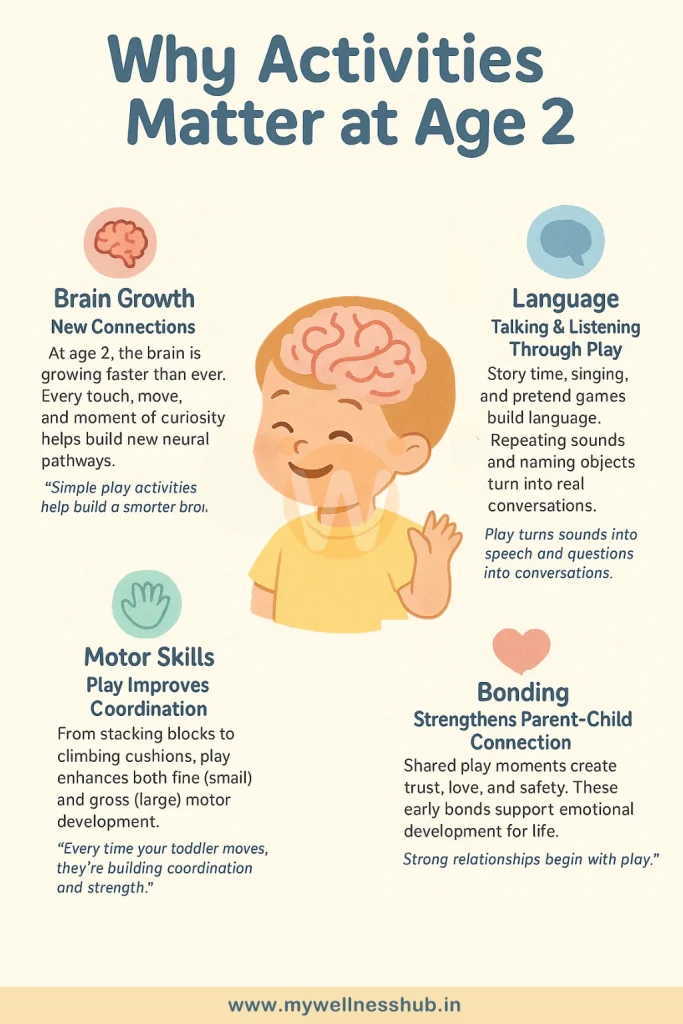
So, why activities for toddlers age 2 matter so much?
Let’s break it down simply.
Brain Development Happens Through Play
At age two, your child’s brain is making new connections every second. Engaging in fun, hands-on activities:
- Improves problem-solving and memory
- Encourages creativity and curiosity
- Builds early language and communication skills
Boosts Motor Skills (Without Them Even Knowing!)
Running, jumping, stacking, scribbling—it’s all part of growing stronger and more confident.
| Activity Type | What It Helps With |
|---|---|
| Stacking blocks | Hand-eye coordination |
| Dancing to music | Balance and gross motor skills |
| Scribbling | Fine motor control & pencil grip |
Builds Emotional Bonds with You
At this age, your toddler learns through connection. Simple activities like pretend play, reading stories, or making animal sounds together:
- Strengthen your bond
- Help them express emotions
- Create trust and security
Help your child build confidence—join our Online Social Skills Training for Kids today!
10 Fun Activities for 2-Year-Olds You Can Try Today
Toddlers love to explore, move, and create—and every moment of play is a chance to learn. Below are five exciting, low-prep, and screen-free ideas you can try today at home. These activities support brain development, language growth, and motor skills… all while having fun together!
1. Sensory Play with Homemade Dough
Nothing beats the joy of squishy dough between little fingers! This simple DIY activity engages your toddler’s senses and boosts creativity.
You’ll need:
- 1 cup flour
- ½ cup water
- A few drops of food coloring
- Optional: a pinch of salt for texture
What to do:
- Mix flour and water in a bowl.
- Add color and stir until soft dough forms.
- Let your child squish, roll, and shape!
Why it’s great:
- Enhances fine motor skills
- Encourages creativity
- Supports sensory exploration
2. Water Play with Cups and Bowls
Looking for a fun way to cool off and learn? Water play is always a toddler favorite—plus, it’s super easy to set up.
Try it:
- Fill a large bowl or small tub with water
- Add plastic cups, measuring spoons, and floating toys
- Let your toddler pour, splash, and explore (always supervised!)
Make it outdoors or try it in the bathtub.
Why it’s great:
- Teaches basic science concepts (sink/float, volume)
- Builds hand-eye coordination
- Great for hot days or calming down
3. Sorting Games with Colorful Toy
Sorting is more than just cleaning up—it’s learning in action! Use what you have at home to create a fun and educational activity.
What to use:
- Colorful blocks, spoons, socks, or lids
- Multiple baskets or bowls
How to play:
- Ask your toddler to group items by color, shape, or size
- Name each group out loud together
Why it’s great:
- Teaches early math and logic
- Improves attention and memory
- Builds vocabulary
Build your child’s vocabulary through play—discover our Action Flashcards for Kids
4. Indoor Obstacle Course
Burn off some toddler energy indoors with a safe, simple obstacle course.
Use items like:
- Sofa cushions
- Chairs to crawl under
- Blankets as tunnels
- A mat for jumping
Let your child:
- Crawl, roll, hop, and stretch from start to finish
Why it’s great:
- Builds gross motor skills
- Encourages problem-solving
- Supports physical confidence
5. Music and Dance Time
Turn up the tunes and move together! Toddlers love rhythm—and dancing is a perfect way to build connection and coordination.
What to do:
- Play simple songs or nursery rhymes
- Clap, stomp, or sway to the beat
- Try freeze dance or copycat moves
Why it’s great:
- Supports speech and rhythm recognition
- Boosts coordination and memory
- Builds emotional expression
6. Nature Walk and Object Hunt
Going on a simple nature walk is a great way to explore, move, and learn at the same time.
Try this:
- Go for a short walk around your garden, neighborhood, or local park
- Bring a small bag and ask your child to collect rocks, leaves, sticks, or flowers
- Talk about what they find: colors, sizes, textures, or shapes
Why it’s great:
- Supports curiosity and observation skills
- Encourages movement and coordination
- Builds vocabulary through real-world items
7. Bubble Blowing Fun
There’s something magical about bubbles—and toddlers love them! This is one of the easiest and most joyful forms of outdoor play.
You’ll need:
- A small bottle of bubble mix (store-bought or homemade)
- A bubble wand or straw
- Space to run and chase!
What it teaches:
- Eye tracking as they watch bubbles float
- Gross motor skills from chasing and popping
- Sensory fun from watching and feeling bubbles pop
Why it’s great:
- Boosts visual attention
- Encourages movement and laughter
- Soothes and entertains
8. Read-Aloud Story Time
Reading aloud builds a love for books and helps with toddler language development.
How to make it fun:
- Choose books with pictures, rhyming words, animal sounds, or textures
- Let your toddler turn pages or point to pictures
- Act out animal sounds or emotions together
Why it’s great:
- Grows vocabulary and comprehension
- Strengthens parent-child bonding
- Helps develop listening and speaking skills
Pro Tip: Try creating a “book basket” with a few favorites for daily read-aloud time!
Read More: Language Development: Stages, Tips, and Common Challenges
9. Matching Cards or DIY Flashcards
Turn play into brain-boosting fun with simple matching games.
What to use:
- Store-bought flashcards or DIY cards made with drawings or stickers
- Categories: animals, colors, shapes, emotions, numbers
How to play:
- Show two cards and ask your child to match or name them
- Add sound effects or simple questions to make it more interactive
Why it’s great:
- Strengthens memory and attention
- Supports early thinking and logic skills
- Builds knowledge of categories and visual recognition
Start meaningful conversations at home—explore our Simple Choices Conversation Cards today!
10. Creative Art with Finger Painting
Messy? Yes. Worth it? Absolutely! Finger painting is a fun way to spark creativity and talk about colors.
You’ll need:
- Non-toxic, washable paints
- Large sheet of paper or cardboard
- An apron or old t-shirt
What to do:
- Let your child dip their fingers and explore different colors
- Talk about what they’re doing: “You’re mixing blue and yellow!”
- Use this time to label emotions, shapes, or letters too
Why it’s great:
- Encourages creative expression
- Builds fine motor control
- Introduces color recognition and sensory exploration
Safety Tips for Toddler Activities
When it comes to toddler play, fun and learning go hand in hand—but safety always comes first. Whether you’re indoors or outside, a few simple precautions can make sure your little one explores, learns, and laughs without risk.
Here’s why safety in toddler activities matters, and how you can keep playtime both fun and worry-free.
Always Supervise
Toddlers are naturally curious—and fast! Even the safest activity can become risky if a child is left unsupervised.
Why supervision is key:
- Prevents accidents or choking hazards
- Allows you to guide and support learning moments
- Helps toddlers feel more secure while exploring
Try this: Turn playtime into bonding time. Sit nearby, cheer them on, or join the fun!
Use Non-Toxic, Age-Appropriate Materials
At age two, everything tends to go in the mouth—paints, toys, even rocks! Make sure all materials are toddler-safe.
| Material Type | What to Check For |
|---|---|
| Paints & markers | Non-toxic, washable, labeled “safe for kids” |
| Toys | No sharp edges or small detachable parts |
| Natural objects | Clean, smooth, and larger than a golf ball |
Avoid:
- Small beads, button batteries, or toys labeled for older kids
- Harsh cleaning products or scented play items
Set Up Safe Play Zones (Indoors and Outdoors)
Creating a safe play space lets your child explore freely without constant “don’t touch that!” moments.
Indoor Tips:
- Use soft rugs or play mats
- Remove sharp furniture edges
- Keep cords and breakables out of reach
Outdoor Tips:
- Use shaded areas during hot hours
- Fence the play zone if possible
- Check for slippery surfaces or sharp objects
Having a designated play zone helps your toddler associate that space with freedom and safety.
Conclusion
You don’t need fancy toys or screens to help your toddler learn. Simple, fun activities like dancing, reading, or sensory play can boost their speech, motor skills, and brain development. The best part? These moments also strengthen your bond with your child.
At Wellness Hub, we support parents with expert advice, easy activity ideas, and helpful tools for early growth. Worried about speech delay? Book a free consultation or try our communication test today. Let’s help your child grow through simple, meaningful play.
Frequently Asked Questions:
1. Why are activities important for 2-year-olds?
Activities help toddlers learn new words, move their bodies, think clearly, and build strong parent-child bonds. At age 2, play supports both brain and emotional development.
2. What are the best indoor activities for 2-year-olds?
Some fun and easy indoor activities include:
- Sensory play with dough
- Read-aloud story time
- DIY flashcards
- Music and dance time
These support speech, focus, and movement—all from the comfort of home.
3. How does sensory play help toddlers?
Sensory play for toddlers boosts brain growth, improves fine motor skills, and helps them explore the world using touch, sight, and sound. It’s both calming and educational.
4. What are good outdoor activities for 2-year-olds?
Outdoor play like nature walks, bubble blowing, and water games help toddlers develop balance, coordination, and observation skills—all while enjoying fresh air.
5. Are these activities good for speech development?
Yes! Activities like reading aloud, singing, and naming objects during play support toddler language development and early speech milestones.
6. How do I know if my 2-year-old has a speech delay?
If your child speaks fewer than 50 words, doesn’t respond to name, or struggles to follow simple instructions, it may be time to check. Try this free speech and communication test from Wellness Hub.
7. Can playtime help with toddler behavior problems?
Yes. Regular, guided play helps toddlers express feelings, follow routines, and stay calm. Creative play and structure can prevent many common tantrums.
8. What are some fun brain games for 2-year-olds?
Try simple matching cards, shape sorting, or color hunts. These cognitive activities for toddlers build focus, memory, and early thinking skills.
9. How long should a 2-year-old play each day?
Toddlers should have at least 1–2 hours of active play daily, broken into short, fun sessions. Keep it simple and follow your child’s interests.
10. Where can I get help if I’m worried about my child’s development?
You can book a free speech therapy consultation at My Wellness Hub. We offer expert support, developmental tools, and personalized guidance for toddlers.
About the Author:
Shilpa Deshpande
Shilpa Deshpande is a skilled speech-language pathologist with over 14 years of experience. Fluent in Kannada, Telugu, Hindi, and English, she specializes in parent counseling, speech sound disorders, fluency assessment, and speech-language evaluations. Shilpa excels at working with children with developmental disorders, offering creative and effective therapy programs. Currently, at Wellness Hub, she holds a BASLP degree and is registered with the RCI. Her patience, ambition, and dedication make her a trusted expert in her field.
Book your Free Consultation Today
Parent/Caregiver Info:
Client’s Details:
* Error Message

